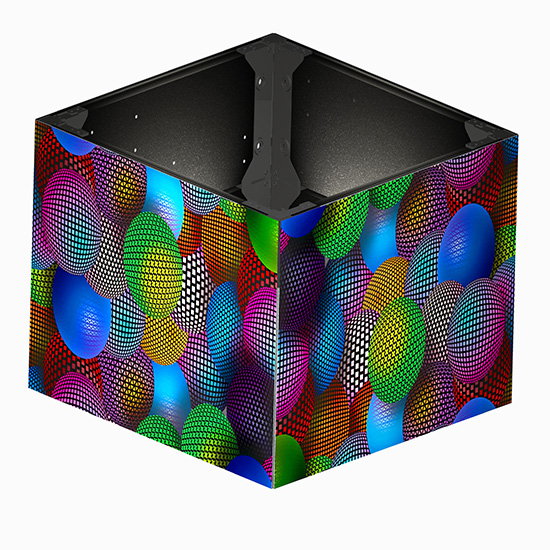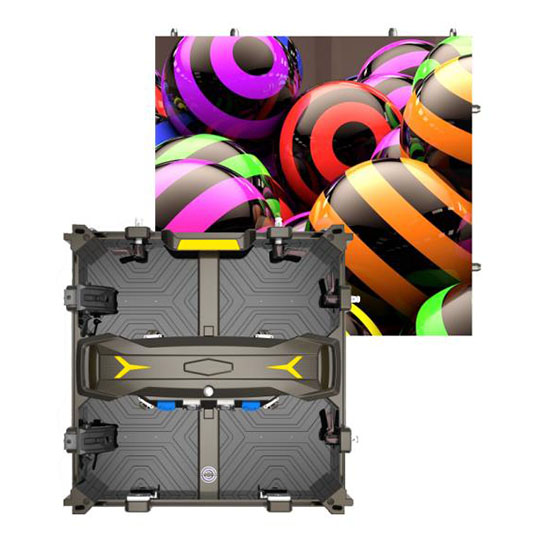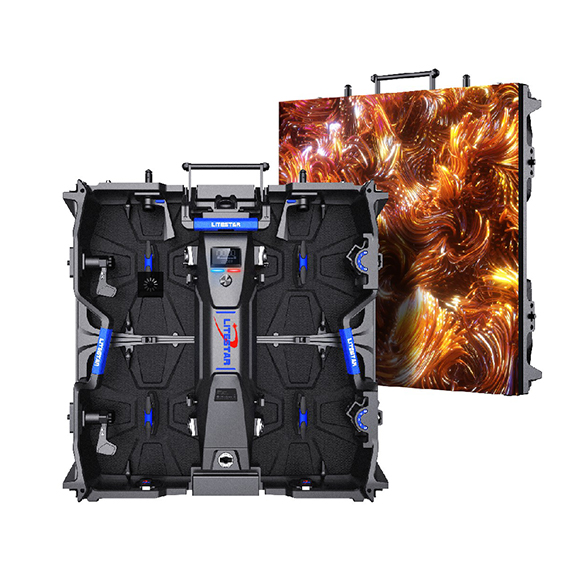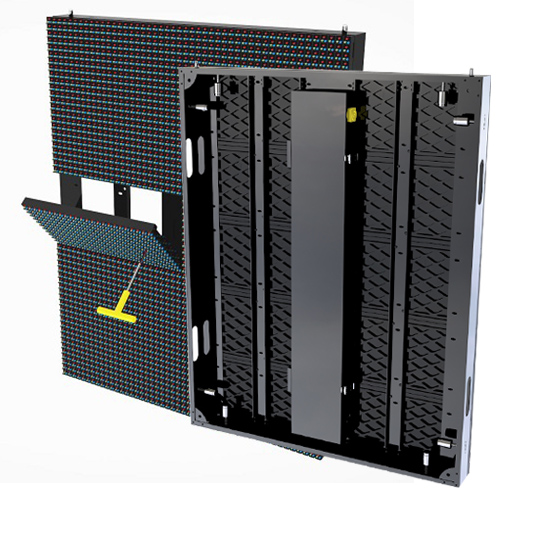What role does the display driver IC play in the LED display?
Many ICs can be seen on the PCB board on the back of the LED display. What influence and effect will these LED display driver ICs have? This article will introduce you to the role played by ED display driver ICs, as well as energy-saving and integration trends.
The role of the driver IC in the full-color LED display is to receive the internal production time PWM protocol to display data (receive video card or processor information from the source).
The current output brightness level refresh and other related PMW current can light up the LED, and the display driver IC, logic IC and display peripheral supporting IC work together on the LED display and determine its current display status.
LED driver chip categories: general-purpose and special-purpose
The general-purpose chip itself is not specifically designed for LEDs, but some logic chips have the logic function of the LED display part.
The dedicated chip is a chip specially designed for LED display drive according to the luminous characteristics of the LED. LED devices with current characteristics, that is, under the premise of saturated conduction, the brightness will change with the change of the current, rather than by adjusting the voltage across it. Therefore, one of the characteristics of the dedicated chip is to provide a constant current. Constant current can ensure the stability of the LED drive and eliminate the flicker of the LED, which is a prerequisite for high-quality LED display. Some dedicated chips for different industries have also added some special functions, such as current correction functions with LED error detection and current gain control.
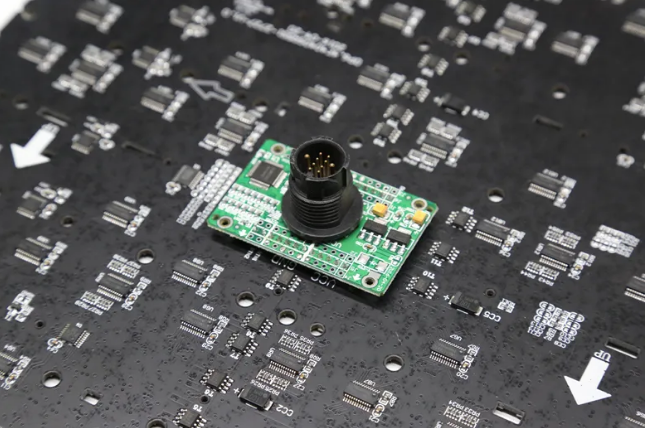
Driver IC development
In the 1990s, LED display applications were based on monochrome, using constant voltage drive ICs. In 1997, China experienced the first-generation LED display dedicated driver IC 9701, with a gray scale ranging from 16 to 8192, achieving what you see is what you get. Subsequently, the luminous characteristics of LED constant current drive became the choice of full-color LED display drive, and the more integrated 16-channel 8-channel drive replaced this drive. In the late 1990s, companies such as Toshiba of Japan, TI of the United States, and Riyuecheng of China successively introduced 16-channel constant current LED driver chips. By the beginning of the 21st century, companies in Taiwan had also begun the production and use of driver chips. Now, in order to solve the PCB wiring problem of the small-pitch LED display, Riyuecheng has launched a highly integrated 32-scan 48-channel constant current LED driver chip.

Driver IC performance
Among LED display performance indicators, image refresh rate and grayscale expression are one of the most important indicators. This requires that the current between channels of the LED display driver IC has a high consistency, a high-speed communication interface rate and a constant response speed. In the past, the relationship between refresh rate, grayscale, and utilization has changed. By sacrificing one of them to ensure that one or two of the indicators can perform better. Therefore, it is difficult for many LED display screens to achieve both in practice. Either the refresh is not enough, the high-speed camera equipment is prone to black lines, or the grayscale is not enough, and the color is inconsistent. With the development of technology driving the development of IC R&D level, these problems can now be solved. In the application of LED full-color display screens, in order to ensure long-term eye comfort for users, low brightness and high ash content have become a particularly important standard for testing the performance of driver ICs.
Driver IC trends
1. Energy saving
Green energy saving is the eternal pursuit of LED displays, and it is also considered an important criterion for the performance of driver ICs. Driving IC energy saving includes two aspects. One is to reduce the inflection point voltage and constant current; the other is to reduce the operating voltage and operating current through optimized algorithms and IC design. Riyuecheng’s pioneering Idle Stop (dynamic low power consumption) energy-saving technology enables less power consumption, lower screen temperature, and black screen standby to save power, which is especially suitable for the use of LED displays that work continuously for 7*24 hours.

High integration
With the rapid decline of the pixel pitch of the LED display screen, the number of packaged devices installed has increased exponentially, which has greatly increased the component density of the module. For example, in the small-pitch P1.9 LED, 15 scans 160 * 180, and 90 modules require 45 lines of constant current drive ICs, 2138. So many available devices make PCB wiring space extremely crowded, thereby increasing the difficulty of circuit design. At the same time, such a cumbersome component layout can easily lead to problems such as poor soldering and reduce the reliability of the module. The smaller the number of driver ICs, the larger the PCB layout area. Therefore, the application requirements of driver ICs must be pushed to a highly integrated technology roadmap. In recent years, Riyuecheng has been committed to the research and development of highly integrated ICs, reducing the overall IC usage ratio by 71% compared to the traditional ones. It also reduces the area of the IC itself, reduces the PCB footprint, and brings customers Less is more. Effect.

 English
English  Esperanto
Esperanto  Afrikaans
Afrikaans  Català
Català  שפה עברית
שפה עברית  Cymraeg
Cymraeg  Galego
Galego  Latviešu
Latviešu  icelandic
icelandic  ייִדיש
ייִדיש  беларускі
беларускі  Hrvatski
Hrvatski  Kreyòl ayisyen
Kreyòl ayisyen  Shqiptar
Shqiptar  Malti
Malti  lugha ya Kiswahili
lugha ya Kiswahili  አማርኛ
አማርኛ  Bosanski
Bosanski  Frysk
Frysk  ភាសាខ្មែរ
ភាសាខ្មែរ  ქართული
ქართული  ગુજરાતી
ગુજરાતી  Hausa
Hausa  Кыргыз тили
Кыргыз тили  ಕನ್ನಡ
ಕನ್ನಡ  Corsa
Corsa  Kurdî
Kurdî  മലയാളം
മലയാളം  Maori
Maori  Монгол хэл
Монгол хэл  Hmong
Hmong  IsiXhosa
IsiXhosa  Zulu
Zulu  Punjabi
Punjabi  پښتو
پښتو  Chichewa
Chichewa  Samoa
Samoa  Sesotho
Sesotho  සිංහල
සිංහල  Gàidhlig
Gàidhlig  Cebuano
Cebuano  Somali
Somali  Тоҷикӣ
Тоҷикӣ  O'zbek
O'zbek  Hawaiian
Hawaiian  سنڌي
سنڌي  Shinra
Shinra  Հայերեն
Հայերեն  Igbo
Igbo  Sundanese
Sundanese  Lëtzebuergesch
Lëtzebuergesch  Malagasy
Malagasy  Yoruba
Yoruba  Español
Español  Português
Português  русский
русский  Français
Français  日本語
日本語  Deutsch
Deutsch  tiếng Việt
tiếng Việt  Italiano
Italiano  Nederlands
Nederlands  ภาษาไทย
ภาษาไทย  Polski
Polski  한국어
한국어  Svenska
Svenska  magyar
magyar  Malay
Malay  বাংলা ভাষার
বাংলা ভাষার  Dansk
Dansk  Suomi
Suomi  हिन्दी
हिन्दी  Pilipino
Pilipino  Türkçe
Türkçe  Gaeilge
Gaeilge  العربية
العربية  Indonesia
Indonesia  Norsk
Norsk  تمل
تمل  český
český  ελληνικά
ελληνικά  український
український  Javanese
Javanese  فارسی
فارسی  தமிழ்
தமிழ்  తెలుగు
తెలుగు  नेपाली
नेपाली  Burmese
Burmese  български
български  ລາວ
ລາວ  Latine
Latine  Қазақша
Қазақша  Euskal
Euskal  Az?rbaycan
Az?rbaycan  Slovensky jazyk
Slovensky jazyk  Македонски
Македонски  Lietuvos
Lietuvos  Eesti Keel
Eesti Keel  Română
Română  Slovenski
Slovenski  मराठी
मराठी  Srpski језик
Srpski језик 





